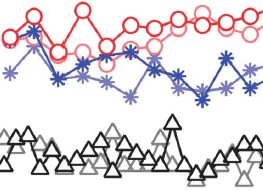
Noise learning and dyslexia.
Dr Trevor Agus (Sonic Arts) published an article on “Perceptual learning of acoustic noise by individuals with dyslexia” in the May 2014 edition of Journal of Speech, Language, and Hearing Research, with Amaia Carrión Castillo, Daniel Pressnitzer and Franck Ramus.
Although dyslexia is often associated with reading, about a third of people with dyslexia also show unusual patterns of results in some hearing tests, including non-speech tasks, such as pitch perception. Theories abound. Does some dyslexia stem from the brain’s first stages in making sense of the information from the ear? Or is the auditory system completely intact, but with some auditory information less accessible to the rest of the brain? Homing in on exactly where the differences emerge is a large ongoing project that involves finding tasks that are affected by dyslexia, but also tasks that are completely unaffected.
For this paper, Trevor and co-authors measured the noise-learning abilities of 36 listeners (half dyslexic, half non-dyslexic). Previous experiments had shown that if you hear the same snippet of white noise just a few times, it can start to stand out from other previously indistinguishable snippets of white noise. This current experiment showed that those with dyslexia could learn the noise just as well as everyone else, and as rapidly. From the ear’s point of view, white noise is an extremely complex stimulus, and finding patterns in it is, from a neuroscientific point of view, an impressive feat. As such, this finding shows that large portions of the auditory system are fully functional in adults with dyslexia.
This work has led to a related collaboration with Dr Tim Fosker (Psychology), in the form of a joint studentship focused on developing an auditory screening test for pre-schoolers at risk of developing language and literacy difficulties.
For more information, or a copy of the paper as published, please contact t.agus@qub.ac.uk.
